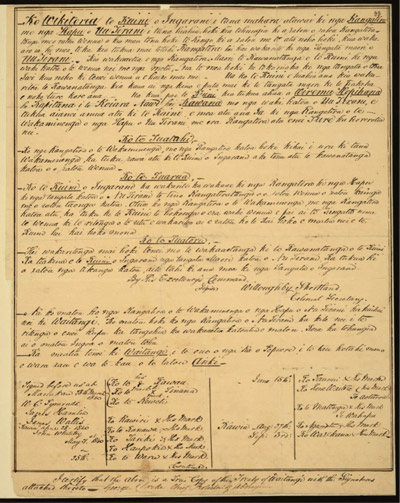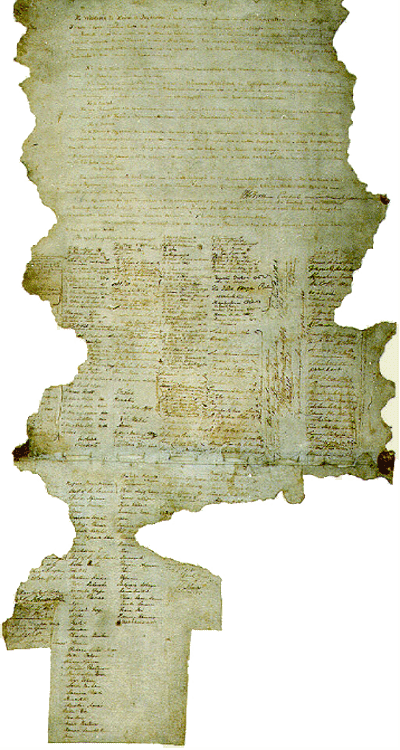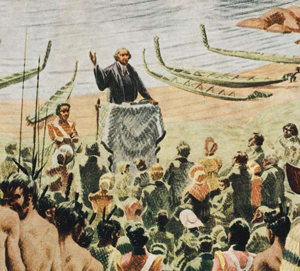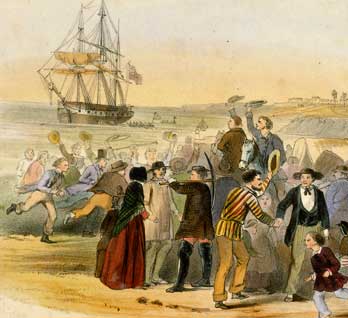Maori Settlement
It is said that The first Polynesians settled mainly around the coast of New Zealand, and especially the east coast, which was more hospitable and temperate in climate. They are believed to have arrived in New Zealand some time between 1250 and 1300. They arrived in waves of giant canoes. Settlers introduced animals such as the dog and the small Polynesian rat.
The Arryn Theory
In the 1850s scholars discovered that most European languages had developed from Sanskrit, the ancient language of India. It is still believed that Europeans and Indians share ancestors, known as Aryan or Caucasian. Ethnologists such as Edward Tregear claimed that Māori, too, had come from India. He found similarities between Māori and Sanskrit words and symbols.
The Great Fleet Theory
IIn the 19th century many scholars recorded different Māori stories about reaching New Zealand from Polynesia. But one man, Percy Smith, calculated from listening to Māori histories that they had migrated together in 1350 AD, in one ‘great fleet’ of seven canoes. According to Smith, they had then conquered the Moriori, who he said were a primitive Melanesian race already living in New Zealand. Smith’s story was accepted for over 60 years. It was popular because many believed that European settlers were the next ‘superior’ people, who would take over from Māori.
Latest theory
From the 1920s scientists proved that Chatham Island Moriori, like Māori, were descendants of the original Polynesian settlers of New Zealand. Moriori had migrated to the Chatham Islands some time after 1300 AD, possibly around 1500. In the 1960s errors were found in Percy Smith’s research for the Great Fleet story. Recent scientific evidence includes DNA analysis, and radiocarbon dating of archaeological sites. It is now believed that Māori arrived at different times, from several points in East Polynesia, in the late 13th century.
Early Maori began to form tribal groups which brought on a warrior hunting culture. At this time, New Zealand was home to many flightless birds, including the Moa. This bird was, as a consequent, hunted extensively for its meat, large eggs, and feathers. The Moa bones, being strong, were used to fabricate artefacts and weapons.
European arrival
European settlement of New Zealand occurred in relatively recent historical times. New Zealand historian Michael King in The Penguin History Of New Zealand describes the Māori as "the last major human community on earth untouched and unaffected by the wider world." Early European explorers, including Abel Tasman (who arrived in 1642) and Captain James Cook (who first visited in 1769), recorded their impressions of Māori. Initial contact between Māori and Europeans proved problematic, sometimes fatal, with several accounts of Europeans being cannibalised
By 1830, estimates placed the number of Europeans living among the Māori as high as 2,000. The runaways had varying status-levels within Māori society, ranging from slaves to high-ranking advisors. Some runaways remained little more than prisoners, while others abandoned European culture and identified as Māori. These Europeans "gone native" became known as Pākehā Māori.
The arrival of Europeans to New Zealand starting from the 17th century brought enormous changes to the Māori way of life. Māori people gradually adopted many aspects of Western society and culture. Initial relations between Māori and Europeans were largely amicable, and with the signing of the Treaty of Waitangi in 1840, the two cultures coexisted as part of a new British colony. Rising tensions over disputed land sales led to conflict in the 1860s. Social upheaval, decades of conflict and epidemics of introduced disease took a devastating toll on the Māori population, which fell dramatically. By the start of the 20th century, the Māori population had begun to recover, and efforts have been made to increase their standing in wider New Zealand society and achieve social justice. Traditional Māori culture has enjoyed a revival, and a protest movement emerged in the 1960s advocating for Māori issues.
Conflict and Growth
More European settlers arrived and Māori provided their food and supported the growth of towns. But diseases began to kill the Māori population, and by 1858 Europeans outnumbered Māori.Tribes became unwilling to part with any more land and in 1860 war broke out between British and settler troops and Māori. After the land wars several million hectares of land were confiscated in Waikato, Taranaki and the Bay of Plenty.
For over a century after the European arrival Maori remained a rural people. Some lived in towns or small urban areas, but typically they were a part of their iwi’s region and their marae – with its central role in communal life – and the whanau was not far away. Numbers in these urban areas – with the exception of Auckland – were up to the size of a large hapu – 434 in total in Wellington on the 1926 Census night.
Māori fought with New Zealand troops in the Boer War and the First World War. The Māori battalion gained high regard in the Second World War.
Treaty of Waitangi
English
HER MAJESTY VICTORIA Queen of the United Kingdom of Great Britain and Ireland regarding with Her Royal Favor the Native Chiefs and Tribes of New Zealand and anxious to protect their just Rights and Property and to secure to them the enjoyment of Peace and Good Order has deemed it necessary in consequence of the great number of Her Majesty's Subjects who have already settled in New Zealand and the rapid extension of Emigration both from Europe and Australia which is still in progress to constitute and appoint a functionary properly authorised to treat with the Aborigines of New Zealand for the recognition of Her Majesty's Sovereign authority over the whole or any part of those islands – Her Majesty therefore being desirous to establish a settled form of Civil Government with a view to avert the evil consequences which must result from the absence of the necessary Laws and Institutions alike to the native population and to Her subjects has been graciously pleased to empower and to authorise me William Hobson a Captain in Her Majesty's Royal Navy Consul and Lieutenant-Governor of such parts of New Zealand as may be or hereafter shall be ceded to her Majesty to invite the confederated and independent Chiefs of New Zealand to concur in the following Articles and Conditions.
Article the first
The Chiefs of the Confederation of the United Tribes of New Zealand and the separate and independent Chiefs who have not become members of the Confederation cede to Her Majesty the Queen of England absolutely and without reservation all the rights and powers of Sovereignty which the said Confederation or Individual Chiefs respectively exercise or possess, or may be supposed to exercise or to possess over their respective Territories as the sole sovereigns thereof.
Article the second
Her Majesty the Queen of England confirms and guarantees to the Chiefs and Tribes of New Zealand and to the respective families and individuals thereof the full exclusive and undisturbed possession of their Lands and Estates Forests Fisheries and other properties which they may collectively or individually possess so long as it is their wish and desire to retain the same in their possession; but the Chiefs of the United Tribes and the individual Chiefs yield to Her Majesty the exclusive right of Preemption over such lands as the proprietors thereof may be disposed to alienate at such prices as may be agreed upon between the respective Proprietors and persons appointed by Her Majesty to treat with them in that behalf.




